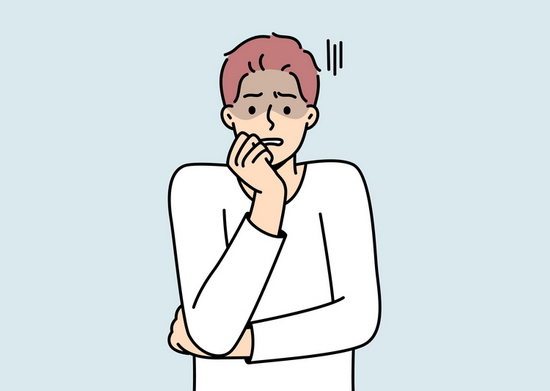It feels like you’ve suddenly lost touch with the reality around you. Or perhaps you looked into a mirror and felt like a stranger in your own reflection. Derealization and depersonalization are disorienting experiences that can make you feel as if you’re losing your mind – but the more we understand them, the more clarity we can find.
It appears that when the mind becomes extremely overloaded, it assumes that even a small amount of extra stimuli might trigger a breakdown, prompting it to activate a filter.
Derealization and depersonalization are among the most unsettling experiences I’ve faced throughout more than 50 years of grappling with emotional and mental challenges.
If you’ve experienced this too, you know exactly what I mean.
Introduction
This three-part series on derealization and depersonalization (DD) was first shared 14 years ago. Due to its ongoing relevance and frequent queries, I’ve decided to update and repost it.
The first part provides some fascinating general information about DD. In this second part, we’ll delve into its causes.
However, since there are no definitive causes of DD, we will discuss what I term “likely contributors,” which can include triggers, predispositions, and theories supported by research.
Quick note: DD often appear as dissociative symptoms found in various other conditions. Nevertheless, the DSM-5-TR includes a diagnostic code specifically for depersonalization/derealization disorder.
Likely Contributors
Now, let’s examine those potential contributors in a structured list format:
- The primary psychological factors contributing to DD are trauma, along with prolonged periods of stress and anxiety.
- Derealization has been associated with childhood trauma, with its severity directly related to the extent of childhood abuse reported.
- DD can manifest as symptoms of a wide range of emotional and mental disorders, including borderline personality disorder, various anxiety disorders, depression, schizophrenia, substance dependence and withdrawal, hormone-related conditions like hypothyroidism, sleep deprivation, migraines, neurological issues, and more.
- Research suggests a biological connection between DD, near-death experiences, and out-of-body experiences.
- Recent studies have pinpointed specific brain cells and circuits responsible for causing dissociation. This led to the discovery of a unique rhythm within a part of the cortex linked to other areas of the brain that produce awareness. For more information, check: Researchers Have Discovered a Rhythm in the Cortex Linked to Dissociation.
Now, let’s switch to a narrative style to explore some theories I’ve developed over the years.
Derealization and Depersonalization: The Mind’s Self-Defense
“Hmm, so my mind is protecting itself. I guess I’ll have to take your word for it – for now.”
During the emotional upheavals I faced 50 years ago, I was completely unaware of what was happening to me. After all, how could I have known?
Remember, back then, mental and emotional issues were rarely discussed, and researching specific topics was quite limited. The internet didn’t exist.
Yet, when it came to DD, I quickly started to put the pieces together. I perceived the intense changes in perception as my mind’s instinctive method of protecting itself from what it viewed as an overwhelming state.
And I still hold that belief today.
Activating the Filter
It seems to me that when the mind recognizes it is deeply overwhelmed, fearing that even a slight amount of additional stimuli could trigger a breakdown, it activates a filter.
This is the mind in a strong protective mode.
In this context, the mind tries to give itself a chance to manage what it is already grappling with.
The last thing it needs is more stimuli, so it decides to filter – to the extreme – blocking the sensory input flooding in from its immediate environment.
And for our discussion, it accomplishes this through DD.
Fear Response and Alarms

“I may still be experiencing episodes, but at least I understand what’s happening. And that eases some of the fear.”
Unfortunately, the fear circuitry of the mind operates quite independently and just as efficiently as the filtering system.
As a result, alarms go off because the sensations brought on by the mind’s self-protective measures – in this instance, through DD – can confuse the alarm system.
These are not sensations that could be perceived as “normal.”
This leads to a state of panic as one desperately attempts to regain balance, control, and comfort. However, this can complicate matters further, as it interrupts the mind’s essential task of managing overwhelming stimuli.
Feeling Stuck
This results in a growing congestion created by two conflicting forces: an overloaded mind on the brink of collapse and a distressed fear response. Without intervention, neither side can move forward.
It’s also possible that DD arises when the mind is so wrapped up in its own traffic jam that it simply can’t accurately process the sensory information it receives.
Always remember, this is about how we perceive ourselves and the world around us. There are limits to what our mind can handle.
Looking Ahead to Part Three
To complete our discussion, we need to dive into one more article – part three – where we will explore some intriguing and insightful ideas from neuroscientist Dr. V.S. Ramachandran.
We’ll also discuss strategies for finding stability amidst the turmoil of derealization and depersonalization.
Stay tuned.
For more valuable information on DD, see part one.
If you’d like to further explore topics on emotional and mental health, check out the titles on the articles page or browse by category below.

After a long struggle with panic, anxiety, mood fluctuations, and alcohol dependence, Bill discovered his true calling: helping others facing similar challenges. At 49, he returned to school to earn counseling credentials and continues his mission through Chipur and various other initiatives.


